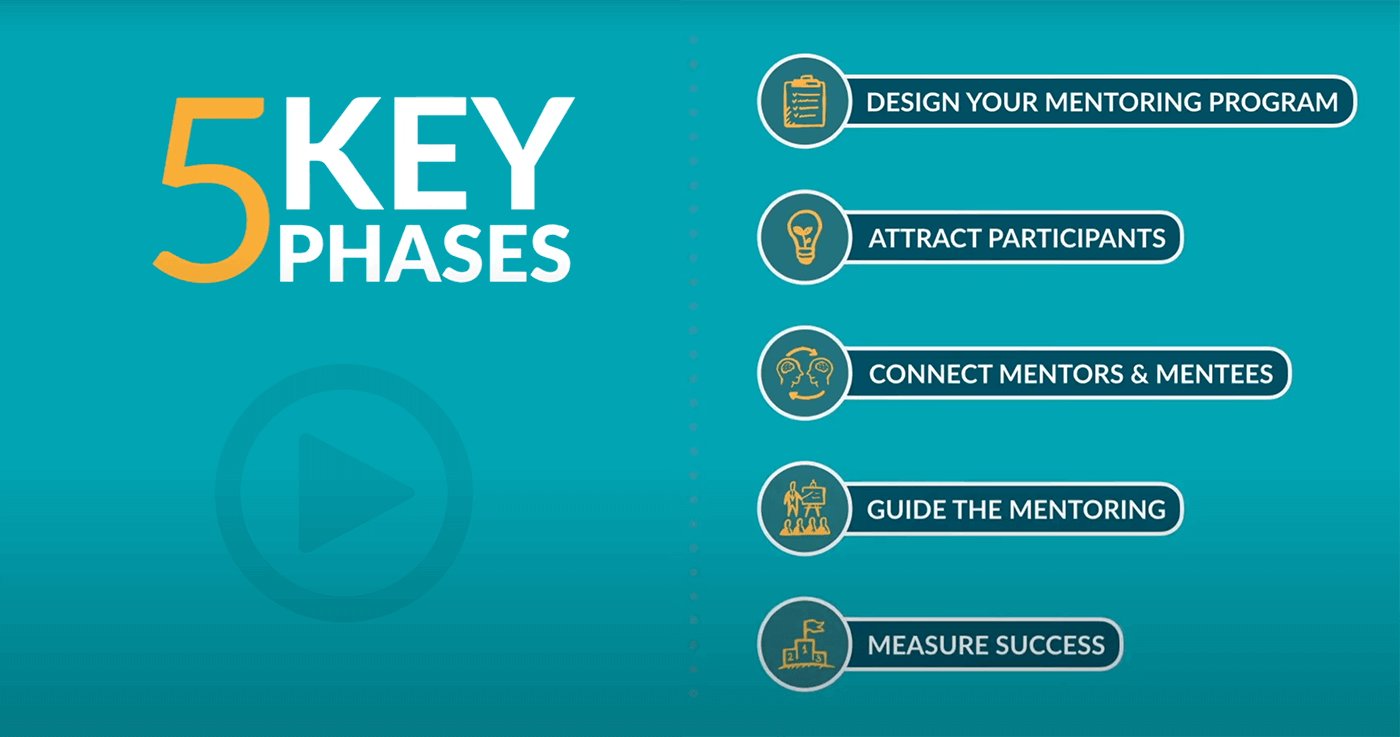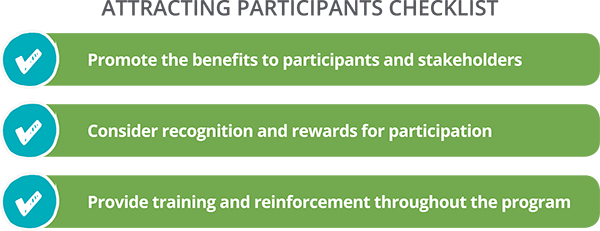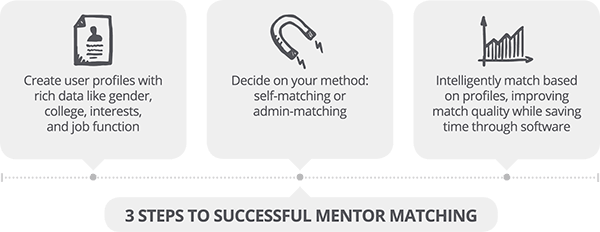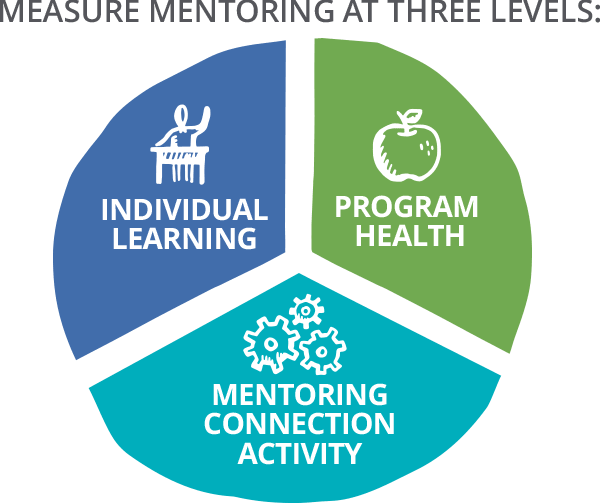5 Step Guide for Successful Mentorship Programs
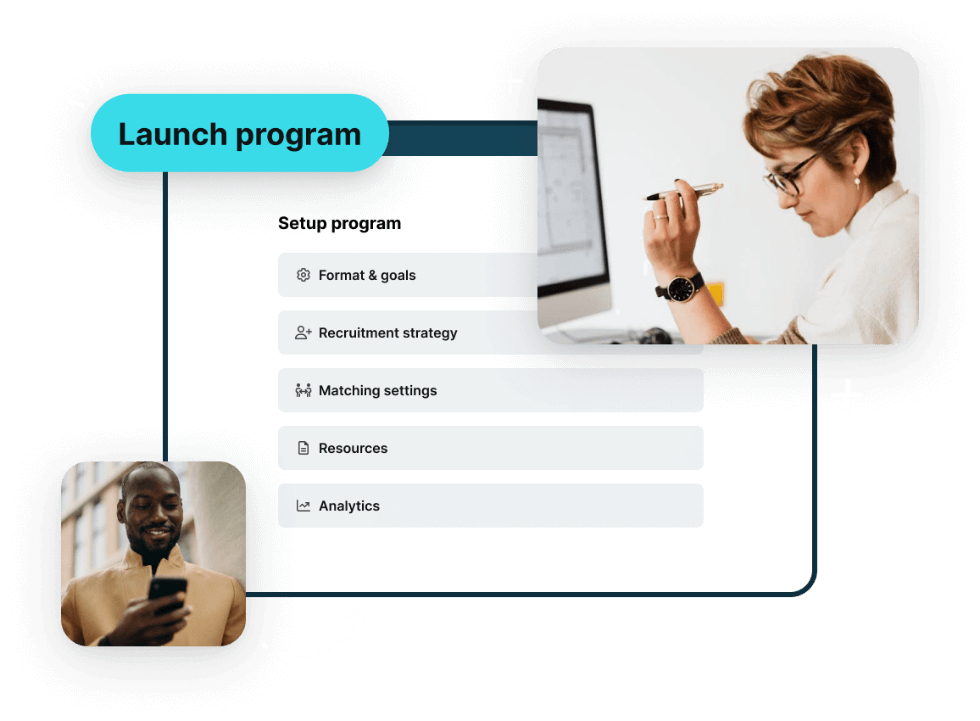
What Makes an Effective Mentorship Program?
A mentoring program is a structured initiative designed to pair experienced individuals with less experienced ones to provide guidance, support and knowledge transfer. Typically, formal mentoring programs are structured around defined objectives, timelines, matching criteria and measurement methodologies to ensure effectiveness. Below are a few examples and best practices for launching successful mentoring programs and in contrast, tips on what contributes to unsuccessful mentoring programs.
Successful mentoring programs
- Thorough planning and preparation: Successful mentoring programs invest time in designing clear objectives, timelines and methodologies, ensuring alignment with organizational goals and participant needs.
- Careful matching of mentors and mentees: A successful program pays attention to the compatibility of mentor-mentee pairs, considering factors such as skills, experience, personality, and goals to foster effective relationships.
- Prioritization of diversity, equity, inclusion, and belonging (DEIB): Successful programs recognize the importance of diverse perspectives and experiences, actively seeking to create inclusive environments where all participants feel valued and supported.
- Leadership buy-in and support: Successful mentoring programs secure support from organizational leaders, who provide resources, visibility, and endorsement, reinforcing the program’s legitimacy and fostering a culture of learning and development.
- Tracking progress and measuring outcomes: Successful programs establish mechanisms to track the progress of mentor-mentee relationships, gather feedback, and measure the impact of mentoring on participants’ development and organizational goals, enabling continuous improvement and accountability.
Download How to Start a Mentoring Program Ebook
Unsuccessful mentoring programs
- Unclear goals and objectives: This can lead to confusion and lack of direction, hindering both mentors and mentees from understanding their roles and expectations. Without clear guidance, participants may struggle to effectively engage, diminishing the program’s potential for meaningful growth and development.
- Lack of leadership buy-in and support: If a mentoring program struggles to gain support from organizational leaders this will inevitably result in limited resources, low visibility, and a lack of commitment from participants, hindering the program’s effectiveness and sustainability.
- The “set it and forget it” approach: A mentorship program can fail very quickly with this mindset as it overlooks the need for ongoing support, guidance and adaptation to meet participants’ evolving needs. Merely assuming that people will automatically engage without active promotion, communication and cultivation of a supportive environment can lead to low participation and ultimately render the program ineffective.
- Poorly matched mentor-mentee pairs or an imbalance in mentor-mentee ratios: Overlooking the importance of matching mentors and mentees effectively will lead to mismatches in expectations, communication styles or developmental needs.
- Neglecting diversity, equity, inclusion, and belonging (DEIB): Failing to address DEIB considerations will result in perpetuating biases, excluding underrepresented groups and creating barriers to participation and engagement.
- Failure to track progress and measure outcomes: Neglecting to establish mechanisms for tracking progress and measuring outcomes will make it difficult to assess the program’s impact, identify areas for improvement and justify continued investment.
Why Start a Mentoring Program?
Mentoring is a powerful practice that facilitates learning, development and growth in individuals and organizations. The benefits of mentoring programs make it a valuable investment for companies as a way to unlock personal and professional skill development and advancement.
According to a CNBC survey, the advantages of mentorship extend beyond only benefiting the mentor and mentee. Happy, productive employees are an asset to any company, as they are more likely to stay with the organization for an extended period. The survey also revealed that over 40% of workers without a mentor have contemplated leaving their jobs in the past three months, contrasting with only 25% of those who have a mentor. In the 2021 State of Coaching and Mentoring Report, HR.com found:
- 67 percent of HR professionals feel mentoring leads to improved organizational performance
- More than 50 percent also agreed their organization will place greater importance on coaching and mentoring over the next two years to combat feelings of isolation, burnout and stagnation.
The purpose of mentoring depends on the organization’s goals and objectives. But mentoring programs have been proven to:
- Improve retention
- Propel advancement
- Build connectivity and empathetic rapport
- Increase employee diversity and representation
- Accelerate knowledge sharing
- Upskill/reskill employees
Increase retention rates
An extensive case study conducted by Sun Microsystems found a direct correlation between employees who participated in mentorship programs and higher retention rates, with 72% of mentees and 69% of mentors staying with the organization compared to 49% of non-participating employees. Furthermore, a CNBC/SurveyMonkey found 9 out of 10 workers with a mentor said they were satisfied with their jobs; more than half rated themselves “very satisfied.”
Accelerate career advancement
Mentorship programs offer a myriad of benefits for employees who actively participate in them. Firstly, they facilitate personal development by providing individuals with guidance, support, and constructive feedback, fostering self-awareness and continuous improvement. Through structured interactions with mentors, employees gain valuable insights into their strengths, weaknesses and areas for growth, enhancing their overall effectiveness and confidence.
Drive employee development
Additionally, mentorship programs contribute to employee development by nurturing talent, boosting morale, and promoting a culture of learning and collaboration within organizations. Mentors serve as role models, helping mentees navigate career challenges, identify opportunities, and set realistic and achievable goals. By pairing experienced mentors with mentees, these programs facilitate knowledge transfer, skill acquisition and professional growth.
Build leadership skills
Through regular discussions and goal-setting exercises, mentees gain clarity on their career aspirations and develop actionable plans to achieve them. Mentorship programs offer a safe space for experimentation and reflection, which empower individuals to develop their leadership capabilities, inspiring confidence and readiness to assume leadership roles in their respective fields.
Improve diversity, equity & inclusion (DEI)
Mentoring fosters an inclusive environment by providing underrepresented individuals with guidance and support, helping them navigate challenges and seize opportunities. Through mentorship, diverse perspectives are amplified, leading to a richer exchange of ideas and solutions within organizations. By empowering marginalized groups through mentorship, barriers to advancement are dismantled, contributing to greater diversity, equity, and inclusion across all levels of the workforce.
In essence, mentoring is an invaluable asset for enterprise organizations, nurturing talent, enhancing employee satisfaction, and bolstering overall success.
Increase retention by 20% with Chronus mentoring software.
How to Start a Successful Mentoring Program
Want to learn how to develop a mentoring program? That’s great. Mentoring is a proven approach to drive rich learning and career development for both mentees and mentors. Mentoring also benefits the organization.
For employers, mentoring increases talent retention, promotion rates, and employee satisfaction for mentors and mentees.
University mentoring is proven to improve student retention, boost job placement rates, and increase alumni engagement when tapping alumni as mentors.
Watch a quick overview video
Starting a mentoring program is within your reach. But great mentoring programs don’t just happen. They are built through thoughtful planning and sustained commitment to guiding participants through the mentoring process while continually improving the program.
As with any major project, proper planning is crucial to achieving your strategic mentorship goals. Mentoring programs can be highly impactful, but there are many factors that are critical to the success of your program. We’ve distilled our guidance into a mentorship program outline video highlighting the five key strategies for building a mentorship program template.
Step 1. Design Your Mentoring Program
The starting point for any mentoring program template begins with two important questions:
- Why are you starting a mentoring program?
- What does success look like for participants and the organization?
To answer these questions you will need to dive deep to understand your target audience. Make sure you understand who they are, where they are, their development needs, and their key motivations to participate. Translate your vision into SMART objectives: specific, measurable, attainable, relevant and time-bound. Some of the perks of creating mentoring objectives include providing direction to program participants, establishing program key performance indicators (KPIs) and helping organizational leaders understand why they should offer their support.
Successful mentorship programs offer both structure and flexibility. Structure provides participants a mentoring workflow to follow. This is critical to helping participants achieve productive learning that reaches defined mentorship goals. Similarly, flexibility is essential to support varying individual mentoring needs across specific learning goals, preferences, and learning style.
Key mentoring program design decisions include:
- Enrollment – is it open, application, or invite only?
- Mentoring style – can be traditional, flash, reverse
- Connection type – possibly 1:1, mentor groups, or one to many
- Connection duration – can be weeks or months — or perhaps even just a single session
- Measurement – tracking and reporting needs.
A good idea is to create a program workflow diagram to explain each step of your mentoring program. You can provide details such as key actions, timeframes, support resources, and criteria for moving to the next phase. Mark areas that will require some flexibility to support user needs.
Mentoring software allows you to deliver a wide-variety of mentoring programs. Regardless of program size, easy-to-use mentoring software can help get your mentorship program started and running smoothly.
Learn how software walks you through mentoring program design
Step 2. Attract Participants for Your Mentoring Programs
The best designed mentoring programs won’t get far without effective program promotion, mentor recruitment, and mentoring training.
When formal mentorship programs are introduced in organizations, there is generally natural enthusiasm. Yet this enthusiasm doesn’t always translate into high participation rates. A common reason is poor promotion of mentoring programs. Don’t assume potential mentors and mentees understand the benefits. For many, this will be their first opportunity to participate in mentoring. You will need to demonstrate the benefits of mentorship programs to show that participating is worth the time and effort, and educate key leaders and stakeholders on the benefits of the program and strategic value to the organization.
Building a solid base of mentors can be a challenge, so consider the needs of the mentors:
- How can you help mentors be more efficient with the time they have to dedicate to mentoring?
- Formally recognize mentor involvement to motivate and attract additional mentors to the program
Lastly, productive mentoring doesn’t just happen. Provide mentorship training to mentors and mentees regarding:
- Promote the benefits to participants and stakeholders
- Consider recognition and rewards for mentoring participation
- Provide mentorship training and reinforcement throughout the program
- the goals mentorship programs
- mentoring participant roles
- mentoring best practices
- your organizational mentoring process
- clarifying mentor and mentee mentoring objectives
The need for mentoring training and guidance doesn’t end after the initial orientation. Provide tips and best practices throughout the mentoring program to help participants stay on track and get the most out of the program.
Get the Ebook Now
Download and Take on the Go
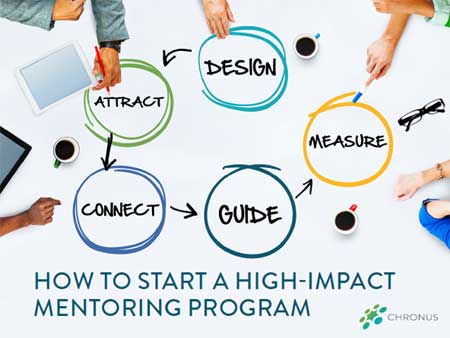
Step 3. Match Mentors and Mentees
A productive mentoring relationship depends on a good match. Properly matching mentors and mentees is often one of the most challenging aspects of a program. Participants will bring various competencies, backgrounds, learning styles and needs. A great match for one person may be a bad match for another.
Three steps to successful mentoring matching:
- Create user profiles with rich data like demographics, tenure, location, interests, and job function
- Decide on your method: self-matching or admin-matching
- Intelligently match based on profiles, improving match quality while saving time through mentoring software
Building Your Matching Criteria
Matching participants in a mentorship program requires a thoughtful approach that centers on aligning individuals’ goals with the program’s objectives. Understanding the wants and needs of participants is key; this involves considering factors such as career aspirations, industry experience, and personal interests. In addition to building your matching criteria, DEI considerations play a pivotal role in the matching process too. When aiming for diverse mentor-mentee pairs across gender, ethnicity, location and other dimensions, program organizers must prioritize inclusivity to promote a supportive and inclusive environment.
Leveraging software solutions like Chronus can streamline this process, offering customizable criteria that take into account participants’ preferences and DEI considerations. By incorporating software tools, program coordinators can enhance the likelihood of successful matches, ultimately maximizing the impact and effectiveness of the mentorship program.
Choosing Your Matching Style
Matching starts by deciding which type of matching you’ll offer in your program: self-matching or admin-matching. Consider allowing mentees to select a particular mentor or submit their top three choices. Self-matching is administrative light, which in larger programs can be a huge plus.
Additionally, mentor styles play a significant role in determining the compatibility of a match. Factors such as communication approach, leadership style and mentoring philosophy can influence the dynamics between a mentor and their mentee, ultimately shaping the effectiveness and satisfaction of the mentoring experience. By carefully considering these elements, mentoring programs can facilitate matches that maximize mutual learning, growth and support.
For more structured programs, such as large groups of new students or new corporate employees, you may want to get the program started by bulk or admin matching. Utilizing software for mentor matching can be valuable. Evaluating various match combinations before finalizing and ensuring quality mentors for hard-to-match mentees can be challenging.
Matching Best Practices
The mentoring matching process is a delicate yet crucial step in ensuring the success of a mentorship program. It begins by meticulously assessing the profiles of both mentors and mentees, taking into account factors such as development goals, interests, experiences and preferences. Matching suitable mentors and mentees involves aligning their objectives, expertise and personalities to create a productive and harmonious relationship.
It’s important to remember that matching best practices start with a solid profile for all participants (mentors and mentees). Critical profile elements include:
- Development goals are a fundamental aspect of these profiles, providing insight into what mentees hope to achieve through the program and guiding mentors in providing tailored support and guidance.
- Mentoring goals help mentors clarify their intentions and expectations, ensuring alignment with the mentee’s needs and objectives.
- Specific topical interests play a crucial role in matching participants with compatible mentors who possess expertise in relevant areas, facilitating meaningful discussions and knowledge transfer.
- Location can also be a significant factor, particularly in programs (and workplaces) where face-to-face meetings are encouraged, ensuring convenient access for both parties.
- Experiences including professional backgrounds, industry knowledge and personal achievements, further inform the matching process, allowing for the identification of mentors who can offer relevant insights and advice based on their own career journeys.
- Matching preferences such as communication styles, personality traits and preferred mentoring formats help to establish rapport and compatibility between mentors and mentees, laying the groundwork for productive and fulfilling mentorship engagements.
Think about how you’ll want to match people, or if you’ll want them to match themselves. For example, you may want to match female leaders with younger female employees, or experienced sales personnel with new recruits. For self-matching, perhaps participants might like to connect with someone from the same previous employer or the same college. The more you know about your participants, the better the chance your program will have a positive outcome.
Regardless of self or admin matching, see how the Chronus platform makes matching faster and easier with strong, intelligent matching capabilities.
How Chronus mentor matching works
Software can drive 50% increased engagement. Learn how.
Step 4. Guide Your Mentoring Relationships
Now that your participants are enrolled, trained, and matched, the real action begins.
It is also where mentoring can get stuck. Left to themselves, many mentorships will take off and thrive. But some may not. Why? Because mentoring is not typically part of one’s daily routine. Without direction and a plan, the mentoring relationship is vulnerable to losing focus and momentum. That is why providing some structure and guidance throughout the mentorship is vital to successful mentoring programs.
One best practice in successful mentoring programs is to ensure all mentorships have goals and action plans. This serves two purposes:
- It brings focus at the onset, which helps a mentoring relationship get off to a good start.
- It adds accountability to accomplish something.
Provide all mentoring relationships with timely and relevant “help resources” (topical content, mentoring best practices, etc.) throughout the mentorship. Bite-sized content delivered at key points is ideal.
As a mentoring connection progresses, establish checkpoints where mentorships report on their progress. Lastly, have a formal process that brings closure to the mentoring experience. This process should account for:
- an opportunity for both the mentor and mentee to reflect upon what was learned
- discussion of next steps for the mentee
- feedback on the benefits of the program and process
Chronus mentoring software makes guiding or facilitating your program’s connections easy, enabling your participants to be highly productive.
Step 5. Measure the Impact of Mentorship Programs
Understanding how your program measures up to expectations may well be the most important phase of all.
Starting a mentorship program is a significant investment when you consider program management, infrastructure, and the valuable time of participants. Articulating the ROI of mentoring is essential to secure ongoing funding and support. In addition, the measure phase is also focused on assessing program health to identify trouble spots and opportunities.
Successful mentorship programs should be tracked, measured, and assessed at three altitudes: the program, the mentoring connection and the individual. To be effective you need the ability to capture metrics and feedback throughout the program lifecycle.
At the program level, build metrics around defined business objectives. For example, in a DEI mentorship programs you may want to compare promotion rates of program participants to non-participants. Also track “funnel” conversion metrics, which show the progress participants make at each step of the mentoring program starting at enrollment. Conversion metrics provide essential insight into program health.
For mentoring connections, you want to understand mentorship behavior to identify roadblocks and opportunities. Common questions you will want to ask are:
- Is the mentoring timeframe too long, too short, or just right?
- Are mentorships getting off to productive starts or lagging behind?
- Are participants leveraging content resources you have provided?
For participants, you want to understand the impact of mentoring in terms of outcomes while acquiring program feedback. One of the easiest ways to capture outcome and feedback is through surveys. Ask participants and stakeholders how well the mentoring program met its goals and the goals of the organization. Also ask them for their ideas for improving the program.
You’ll also want to be sure you’re benchmarking your mentoring program in the areas of enrollment, matching and engagement — so you’ll understand if the performance you’re seeing is good, bad or average in comparison to other mentorship programs.
Not sure how to establish benchmarks? Check out our Mentoring Benchmarks Report: Quit Navigating in the Dark.
What are Three Types of Mentoring Formats?
There are many types of mentoring that drive development, growth and connection. The important thing is to decide which mentoring format is right for your organization and it’s people. Here are a few to consider.
Employee Career Mentoring
Offering formal career development is a tangible way to show employees that their career trajectory matters. Career mentoring is by far the most common mentoring program we see in the workplace. This traditional one-to-one mentoring relationship can last nine to 12 months. Employees get the opportunity to learn and build skills, which can help grow their careers, keeping them from feeling stagnant in their roles.
Reverse Mentoring
This format pairs a more senior employee with a more junior employee. Companies can implement reverse mentoring in a one-to-one or group setting. The younger employee serves as the mentor, providing senior members of the organization with up-to-date information on the latest frontline experiences, technical skills, and workplace culture.
Mentoring Circles
A mentoring circle is a peer-to-peer format, similar to group mentoring, that enables employees to find peers who share common interests or learning objectives, and develop together as a group. People from across departments and generations can learn from one another, expanding institutional knowledge. Employees can also build cross-functional relationships with people of similar or diverse backgrounds. Organizations can utilize mentoring circles for employee resource groups (ERGs) as a way to foster belonging. Employees of similar backgrounds can find a psychologically safe space for discussion, solidarity and support, where people can feel free to self-identify and be their authentic selves.
Reduce Admin Time & Improve Impact with Software
Formal mentorship is an impactful strategy to develop, engage and retain your people. But to do it at scale—beyond a program of 20, 40 or even 60 people—you’ll need the right platform that can design, match and measure your participants across teams, departments, locations and beyond.
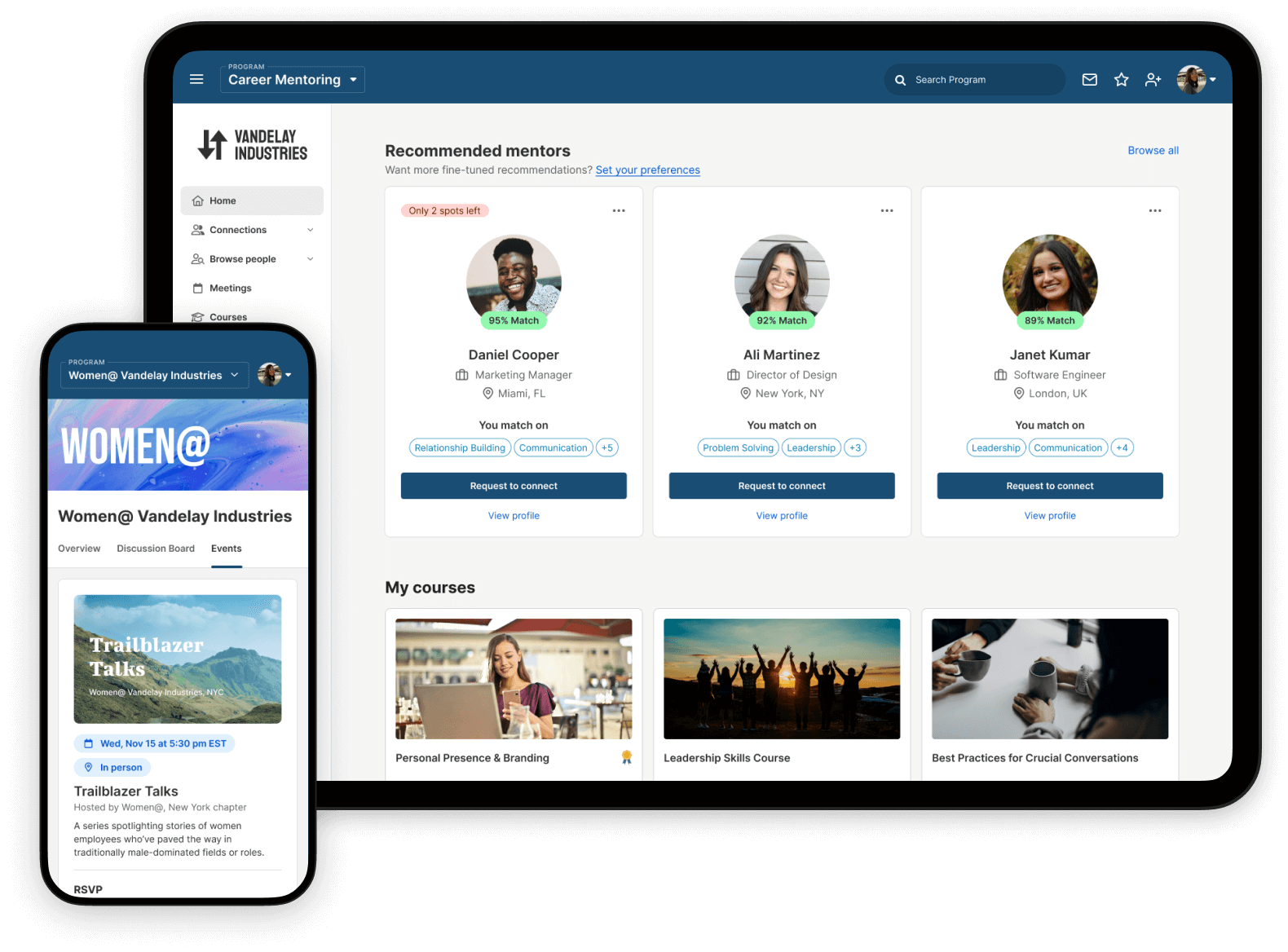
- train mentors and mentees to be productive
- guide participants through a mentoring connection
- measure participant outcomes connected to organizational goals
- integrate with HRIS systems and platforms your employees use daily to improve engagement
Utilizing mentoring software to create lasting structure and accountability in your program can add immense value to your mentoring strategy. Simplify the complex with Chronus mentoring software! Get started today.
In Conclusion
Formal mentorship is an impactful strategy to develop, engage and retain your people.
Following our mentoring program guidelines laid out in this five step process will put you on the right path to achieve your organization’s learning and mentorship goals. Developing and implementing a successful mentoring program requires careful planning and commitment. The benefits of such programs are evident, with positive impacts on talent retention, promotion rates, and employee satisfaction for employers.
The process of starting a mentoring program involves key steps including:
- Design your program
- Attract participants
- Match mentors and mentees
- Guide the mentoring relationships
- Measure program impact
Thoughtful consideration of each step, from setting SMART objectives to providing mentorship training, is crucial for building a program that not only meets its goals but also contributes to the overall success and development of participants.
Finally, measuring the impact of mentorship programs at various levels — individual, program, and connection — is essential for articulating the ROI of mentoring, identifying areas for improvement, and ensuring ongoing support and funding. Overall, the success of a mentoring program hinges on a well-thought-out strategy, ongoing support, and a commitment to fostering meaningful connections bent on people-centric development.
Mentoring Software Can Help
Watch the video to see how the Chronus mentoring platform makes it easy to start, manage, and measure modern mentorship programs.
What Can You Achieve
with Chronus?
Increase retention by 20% with Chronus mentoring software.

